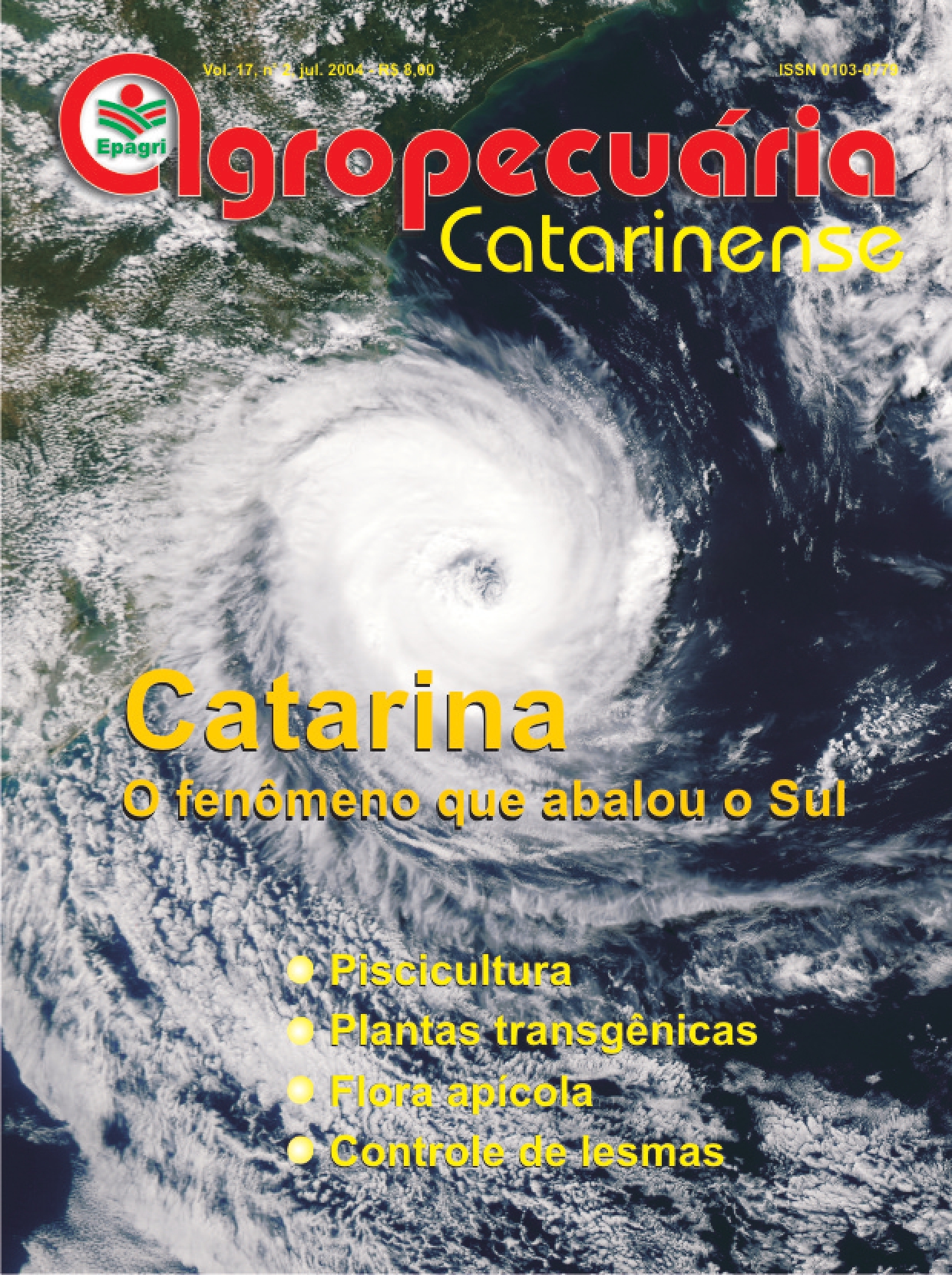Slugs: agricultural pests and threats to the human health
DOI:
https://doi.org/10.52945/rac.v17i2.1005Keywords:
mollusks, pests, human disease, integrated managementAbstract
The slugs are agricultural pests that transmit to human being the parasitic nematode Angiostrongylus costaricensis. Slugs like Sarasinula linguaeformis, Phyllocaulis variegatus, Deroceras spp. and Limax maximus frequently occur in Western Santa Catarina, Brazil. This research was carried out in order to study the parasite infection and disease and to produce knowledge to support the integrated management of these pests. The parasitosis
occured as an asymptomatic infection of low morbidity and with spontaneous cure in less than one year. In laboratory S. linguaeformis attained the reproductive phase with 179 ± 11 days, laid every 20 days with the average of 49,2 ± 7,2 eggs and incubated in 16 ± 0,5 days with viability of 98,9%. This slug had no preference for sorghum, corn, cassava,
garlic, tomato plants and several forest species. Cartap (250g/ha) and copper sulfate (2%) had slugs repellent effects. Toxics baits formulated either with metaldehyde and thiodicarb or with boric acid (3% to 5%) are recommended to control these mollusks.
Metrics
Publication Facts
Reviewer profiles N/A
Author statements
- Academic society
- Epagri - Revista Agropecuária Catarinense
- Publisher
- Empresa de Pesquisa Agropecuária e Extensão Rural de Santa Catarina - Epagri
Downloads
Published
How to Cite
Issue
Section
License
Copyright (c) 2004 Agropecuaria catarinense

This work is licensed under a Creative Commons Attribution 4.0 International License.





